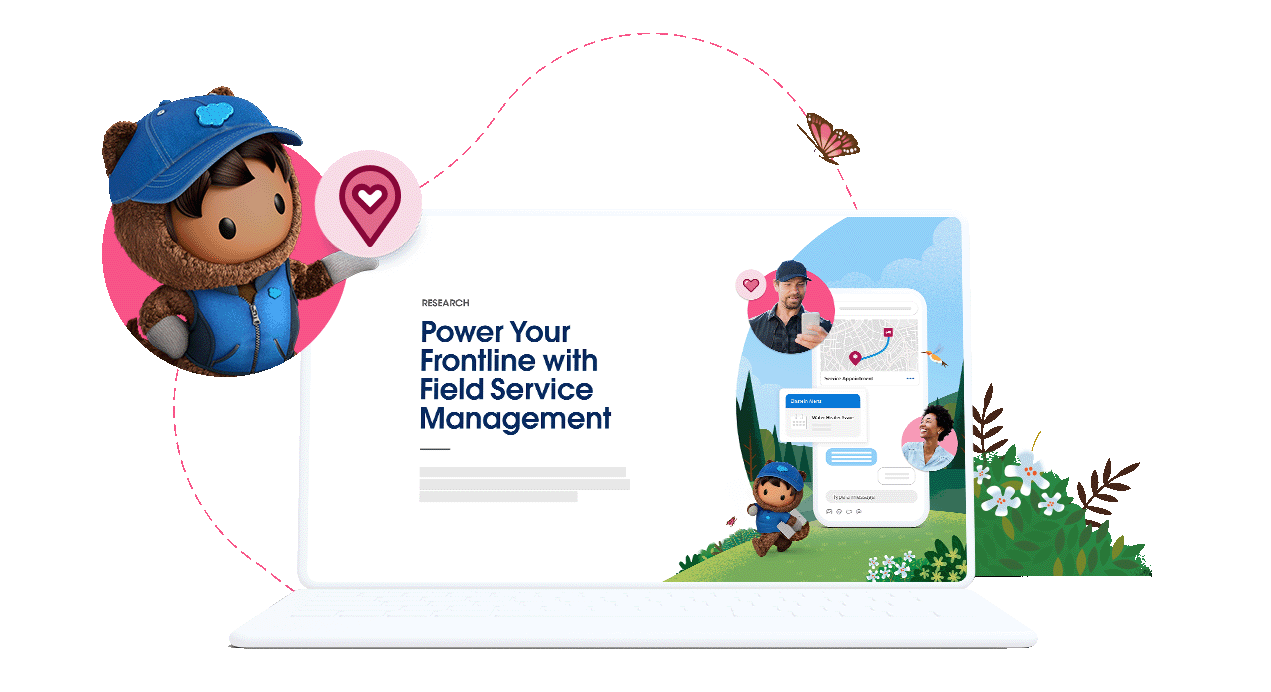How You Can Manage Field Service More Efficiently With AI



Automation and AI can help you see results quickly by helping your mobile workers become more productive in less time.
Customer expectations have never been higher. According to our research, 88% of customers say the experience a company provides is just as important as its products or services. Yet 82% of mobile workers struggle to balance speed with quality when providing field service. That’s why you need the best field service management software to make the customer experience as effective as your service.
But what sets the best field service management software apart? It all comes down to which solution can deliver a quick return on investment (ROI) — and that’s where AI comes in.
With AI and automation, your mobile workers can become more efficient in the field, helping you save money. Getting started with AI technology in your field service can help you get the most from your investment.
Drive efficiency with automation, AI, and real-time data
Manage your mobile workforce in a whole new way.




Why AI is key for the best field service management software
We’ve found that 78% of high-performing field service businesses already use field service management software with AI — and 83% use workflow automation. These organisations report improvements in worker productivity, customer satisfaction, cost reduction, and brand loyalty — all of which contribute to faster ROI.
With AI, customer data, and your CRM unified in a mobile platform, your mobile workers have everything they need in one spot. They won’t waste hours searching for information or performing repetitive data entry. They can even generate a detailed work summary so they can move on to the next job in less time.
The result? Greater productivity, a quicker return on your investment, and a better employee experience. In fact, 93% of mobile workers in high-performing organisations say job satisfaction is a major benefit of using field service management software.
How to improve your team’s productivity with AI and automation
Generative AI, a type of advanced AI that takes a set of data and uses it to create something new, can help your field service operations run smoother. Here are a few examples of how the best field service management software can help your mobile workers improve productivity before, during, and after visits.
- AI can proactively brief your mobile workers on past service interactions, asset history, offers, and communications, so they’re set up for success before they even head out to a customer’s site.
- Generative AI can create automated work summaries after jobs are completed, saving time for your team.
- Your mobile workers can use AI-powered tools like chatbots to schedule appointments, get real-time alerts, and find answers to questions.
- AI can suggest upsell opportunities based on a customer’s purchase and service history, enabling your mobile workers to grow revenue.
- New employees and contractors can onboard quickly with AI-generated knowledge base articles and guides.
Meanwhile, automation can speed up workflows for creating a new account, placing an equipment order, or scheduling service. In fact, 95% of high-performing companies save time with process and workflow automation.
How to get started with field service management software
Even the best field service management software can only deliver results if your mobile workers use it to its full potential.
So how do you get started? To answer that question, we talked to Kim Campbell, Lead Researcher, Research and Insights for Field Service at Salesforce. She’s accompanied many mobile workers on a wide variety of on-site visits through every stage of a major rollout. Here’s what she recommends to help your team succeed:
- Align on your objectives: It’s important to get your team and stakeholders aligned on what your AI-powered software needs to accomplish and why. “Asking the right questions can get you started on the right path,” said Campbell. “For example, what are your goals? How will the best field software management software help you achieve those goals? And how will you determine ROI and what success looks like?”
- Create a rollout strategy: Many organisations take a phased approach to rolling out new enhancements such as AI-powered productivity tools. Campbell recommends creating a pilot team to use the software before introducing it to the rest of the company. “A new platform can be a big change,” she said. “You need to build trust. So always ask yourself: how can we break this into manageable phases? How can we bring people along on the journey?”
- Set expectations: As with any new tool, productivity may see a temporary dip as contractors and workers learn new processes and software — but only at first. “There may be acute anxieties around change management for these technologies,” said Campbell. “Make sure to articulate how the software will help them. For example, how will AI minimise busywork once they’re up to speed?”
- Identify champions: Find tech-savvy team members who can inspire your field service team to give the software a shot. “I call them ‘friendlies,’” said Campbell. “They’re people who really care about the technology, and who might be more patient and adaptable as you adjust to a new software platform. They can help with the rollout by answering questions and demonstrating how the software works.”
- Accelerate training with video and generative AI: A comprehensive training program should include a mix of in-person training and video modules. You can also deliver AI-powered suggestions within your field service app to help your mobile workers ramp up faster.
Here’s the bottom line: in a fiercely competitive market, the future of field service belongs to the agile. The most successful field service organisations will be the ones that improve efficiency, grow revenue, and adapt to customers’ changing needs. When your field service management software has AI and automation, your mobile workers are set up to successfully deliver efficient, effective customer service – every time.


























